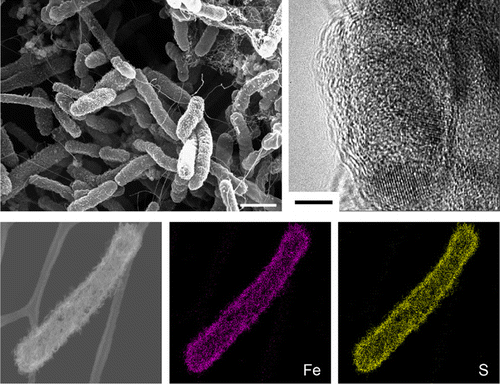Xiao-Cheng Jiang, Jin-Song Hu, Alexander M. Lieber, Charles S. Jackan, Justin C. Biffinger, Lisa A. Fitzgerald, Bradley R. Ringeisen, Charles M. Lieber ;
Nano Lett., 2014, 14, 6737-6742
DOI: 10.1021/nl503668q
Abstract (click image for pdf file)

Microbial fuel cells (MFCs) have been the focus of substantial research interest due to their potential for long-term, renewable electrical power generation via the metabolism of a broad spectrum of organic substrates, although the low power densities have limited their applications to date. Here, we demonstrate the potential to improve the power extraction by exploiting biogenic inorganic nanoparticles to facilitate extracellular electron transfer in MFCs. Simultaneous short-circuit current recording and optical imaging on a nanotechnology-enabled platform showed substantial current increase from Shewanella PV-4 after the formation of cell/iron sulfide nanoparticle aggregates. Detailed characterization of the structure and composition of the cell/nanoparticle interface revealed crystalline iron sulfide nanoparticles in intimate contact with and uniformly coating the cell membrane. In addition, studies designed to address the fundamental mechanisms of charge transport in this hybrid system showed that charge transport only occurred in the presence of live Shewanella, and moreover demonstrated that the enhanced current output can be attributed to improved electron transfer at cell/electrode interface and through the cellular-networks. Our approach of interconnecting and electrically contacting bacterial cells through biogenic nanoparticles represents a unique and promising direction in MFC research and has the potential to not only advance our fundamental knowledge about electron transfer processes in these biological systems but also overcome a key limitation in MFCs by constructing an electrically connected, three-dimensional cell network from the bottom-up.

